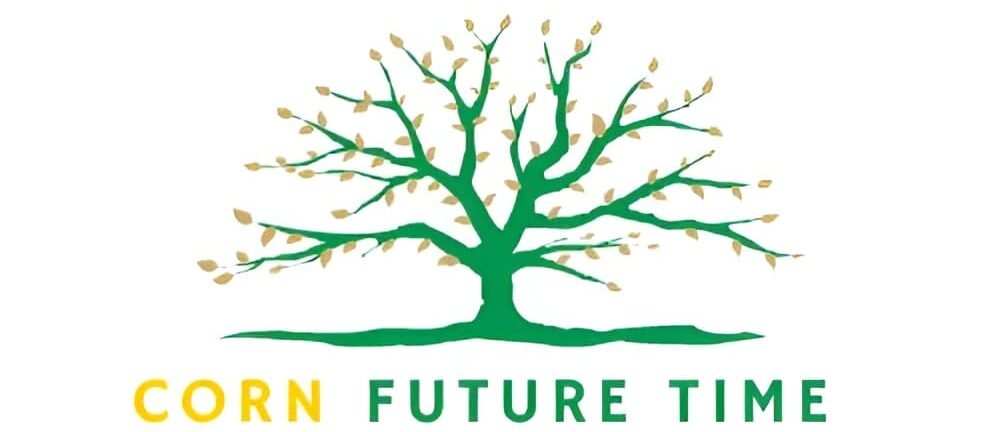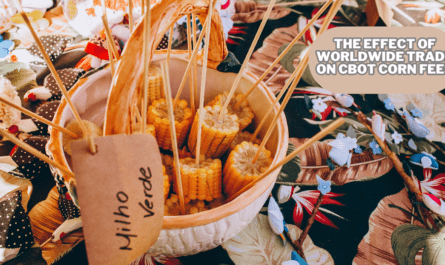 |
| Historical CBOT Corn charges underwent transformative shifts, reshaping agriculture and global trade dynamics. |
Unraveling developments and rate actions in CBOT Corn Futures
The Chicago Board of trade(CBOT) has played a pivotal role within the corn market, serving as the
epicenter of corn futures buying and selling. Historical evaluation of CBOT Corn charges For traders, analysts, and
policymakers, analyzing the ancient charges of CBOT corn futures is critical
for know-how market developments and making knowledgeable selections. This text
delves into the importance of CBOT, the mechanics of corn futures contracts,
and the importance of historical analysis.
I. Assessment of CBOT Corn Futures:
CBOT corn futures contracts are agreements to shop for or promote a targeted quantity of corn at
a predetermined rate and date within the future. Speculators and hedgers are
key players in the futures market, with speculators looking for take advantage
of fee fluctuations and hedgers aiming to manage hazard associated with fee
actions.
II. Key historic Milestones in CBOT Corn fees:
The early years of CBOT corn trading had been marked by the establishment of standardized contracts.
Over the years, major activities, which includes crop disasters and
geopolitical shifts, have drastically impacted corn charges, leading to
volatility and possibilities for marketplace participants.
III. Long-term Corn fee tend:
Inspecting corn fee traits over several a long time exhibits exciting styles. Figuring out most important
bull and undergo markets can offer precious insights into potential destiny
rate movements and tell investors’ strategies.
IV. Influential elements on CBOT Corn charges:
A. Deliver-side factors:
Corn production and yield developments play a vital position in charge determination. Knowledge ancient
production data facilitates predict future deliver dynamics.
Technological improvements in agriculture, which include improved seeds and farming practices, have a
tremendous effect on corn output and expenses.
Weather-associated issues, including droughts and floods, can motive supply shocks, ensuing in fee
fluctuations.
B. Demand-side elements:
Domestic and worldwide intake traits have an effect on corn fees. Converting dietary possibilities and
population increase affect call for dynamics.
The upward thrust in biofuel call for has had a profound impact on corn fees, with ethanol
production turning into a major driving force of corn intake.
Shifts in cattle feed demand can affect corn fees, especially for the duration of durations of
excessive meat intake.
C. Macro-economic elements:
Forex fluctuations can alter corn fees for importers and exporters, affecting global trade dynamics.
Change guidelines and agreements impact corn exports and imports, causing ripples inside the global
market.
Global monetary situations, together with economic boom and recession, influence corn call for
and charges.
 |
| Weather fluctuations, global demand, and trade policies are key elements disrupting CBOT Corn charges. |
V. Incredible charge Volatility and activities:
Analyzing substantial fee swings and volatility spikes uncovers the events that induced excessive rate
movements, consisting of geopolitical tensions or deliver disruptions. Understanding
those events can put together investors for future uncertainties.
VI. Comparisons with different Agricultural Commodities:
Comparing corn price movements with different grains, together with soybeans and wheat, permits for
a broader angle on commodity market conduct. Similarities and variations in
rate conduct can provide valuable insights.
VII. Role of CBOT in
charge Discovery:
CBOT corn prices contribute to market transparency and charge discovery, presenting critical
facts to marketplace contributors. Examining the relationship among CBOT fees
and cash marketplace costs exhibits market inefficiencies and arbitrage
opportunities.
VIII. Instructions found out from ancient tendencies:
Insights from historic tendencies provide traders and investors with valuable lessons. Know-how past
styles can assist investors make knowledgeable selections and manage danger
successfully. Policymakers and agricultural stakeholders can use historic
evaluation to broaden strong rules and sell stability inside the corn market.
IX. Classes learned from historical tendencies:
A. Insights for buyers and traders within the Corn market:
Buyers and buyers can draw numerous precious insights from ancient tendencies in CBOT corn prices.
Understanding lengthy-time period fee traits and most important bull and endure
markets can help investors pick out potential access and go out factors for his
or her positions. Moreover, reading ancient fee volatility and the occasions
that induced intense price movements can assist traders in handling chance and
growing effective hedging strategies.
B. Implications for Policymakers and Agricultural Stakeholders:
Policymakers and agricultural stakeholders can leverage historic evaluation to expand effective
rules and strategies. Understanding the effect of supply-side elements, which
include technological improvements and weather-associated issues, can useful
resource in formulating measures to sell sustainable agriculture and mitigate
production risks. Furthermore, insights into demand-side factors, like
modifications in biofuel demand and farm animals feed necessities, can help
policymakers increase rules to stabilize meals and feed markets
X. The course ahead: Embracing exchange and increase
- The historical assessment of CBOT corn costs has shed light available in the marketplace’s beyond and its
journey thru time. As we circulate the destiny, the corn market will hold to
stand new demanding situations and opportunities. Embracing exchange and boom
will be critical for all stakeholders worried.
- Buyers and buyers ought to remain vigilant and adapt their techniques to converting marketplace dynamics.
By using manner of staying informed about supply-aspect and get in touch with
for-component factors, they could find out ability shifts within the market and
make properly timed selections.
- Policymakers and agricultural stakeholders have the responsibility of ensuring a sustainable and
solid corn marketplace. Utilizing the training learned from historical
tendencies, they could craft regulations that promote green production,
mitigate risks, and guide the desires of both customers and manufacturers.
- Researchers and analysts should keep their exploration of corn market dynamics. The evaluation of
ancient traits is without a doubt one piece of the puzzle. As generation
advances and new information turns into available, similarly research will
offer a deeper understanding of the difficult factors influencing corn prices.
- Moreover, market individuals ought to leverage the placement of CBOT in rate discovery. The
trade’s transparency and accessibility to historic charge data can empower
buyers and investors to make extra informed choices.
- In conclusion, the historic assessment of CBOT corn charges serves as a compass, guiding us via
the twists and turns of the corn futures market. The past offers treasured
insights into the existing, and the winning informs our route ahead. Via
mastering from statistics, embracing change, and fostering increase, the corn
marketplace can hold to thrive and satisfy its important position in
international XI. The course ahead: agriculture embracing exchange and increase and trade.
- The historical assessment of CBOT corn costs has shed light available in the marketplace’s beyond and its
journey thru time. As we circulate the destiny, the corn market will hold to
stand new demanding situations and opportunities. Embracing exchange and boom will
be critical for all stakeholders worried.
- Buyers and buyers ought to remain vigilant and adapt their techniques to converting marketplace dynamics.
By using manner of staying informed about supply-aspect and get in touch with
for-component factors, they could find out ability shifts within the market and
make properly timed selections.
- Policymakers and agricultural stakeholders have the responsibility of ensuring a sustainable and
solid corn marketplace. Utilizing the training learned from historical tendencies,
they could craft regulations that promote green production, mitigate risks, and
guide the desires of both customers and manufacturers.
- Researchers and analysts should keep their exploration of corn market dynamics. The evaluation of
ancient traits is without a doubt one piece of the puzzle. As generation
advances and new information turns into available, similarly research will
offer a deeper understanding of the difficult factors influencing corn prices.
- Moreover, market individuals ought to leverage the placement of CBOT in rate discovery. The
trade’s transparency and accessibility to historic charge data can empower
buyers and investors to make extra informed choices.
- In conclusion, the historic assessment of CBOT corn charges serves as a compass, guiding us via
the twists and turns of the corn futures market. The past offers treasured
insights into the existing, and the winning informs our route ahead. Via
mastering from statistics, embracing change, and fostering increase, the corn
marketplace can hold to thrive and satisfy its important position in
international agriculture and trade.
XI. Conclusion
unveils trends, great charge moves, and factors that shape the corn market. A
complete know-how of these factors is vital for buyers, analysts, and
policymakers to navigate the complexities of the corn futures marketplace. By
way of mastering from the beyond, marketplace individuals can put together for
the destiny and make better-knowledgeable decisions


